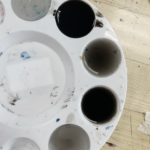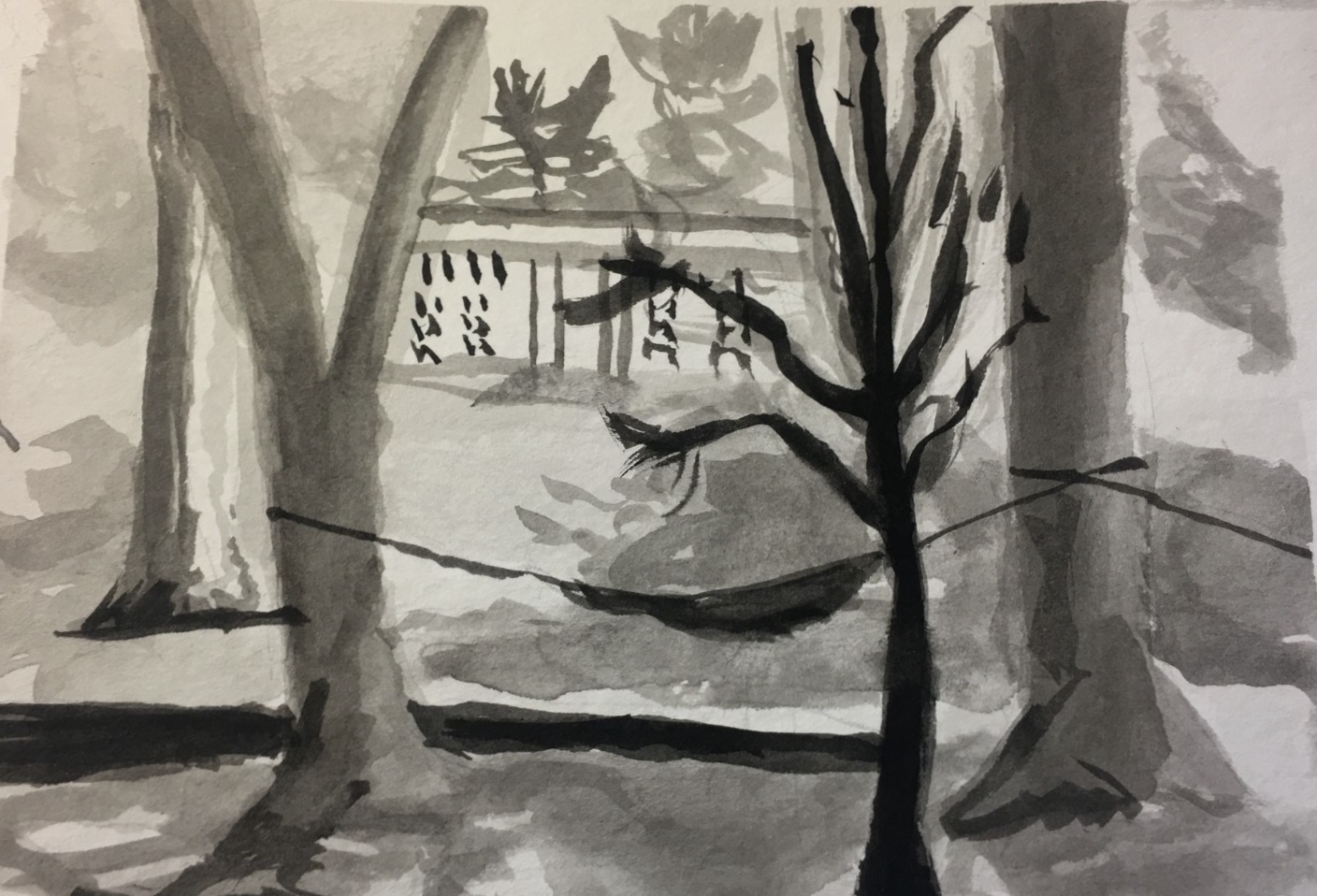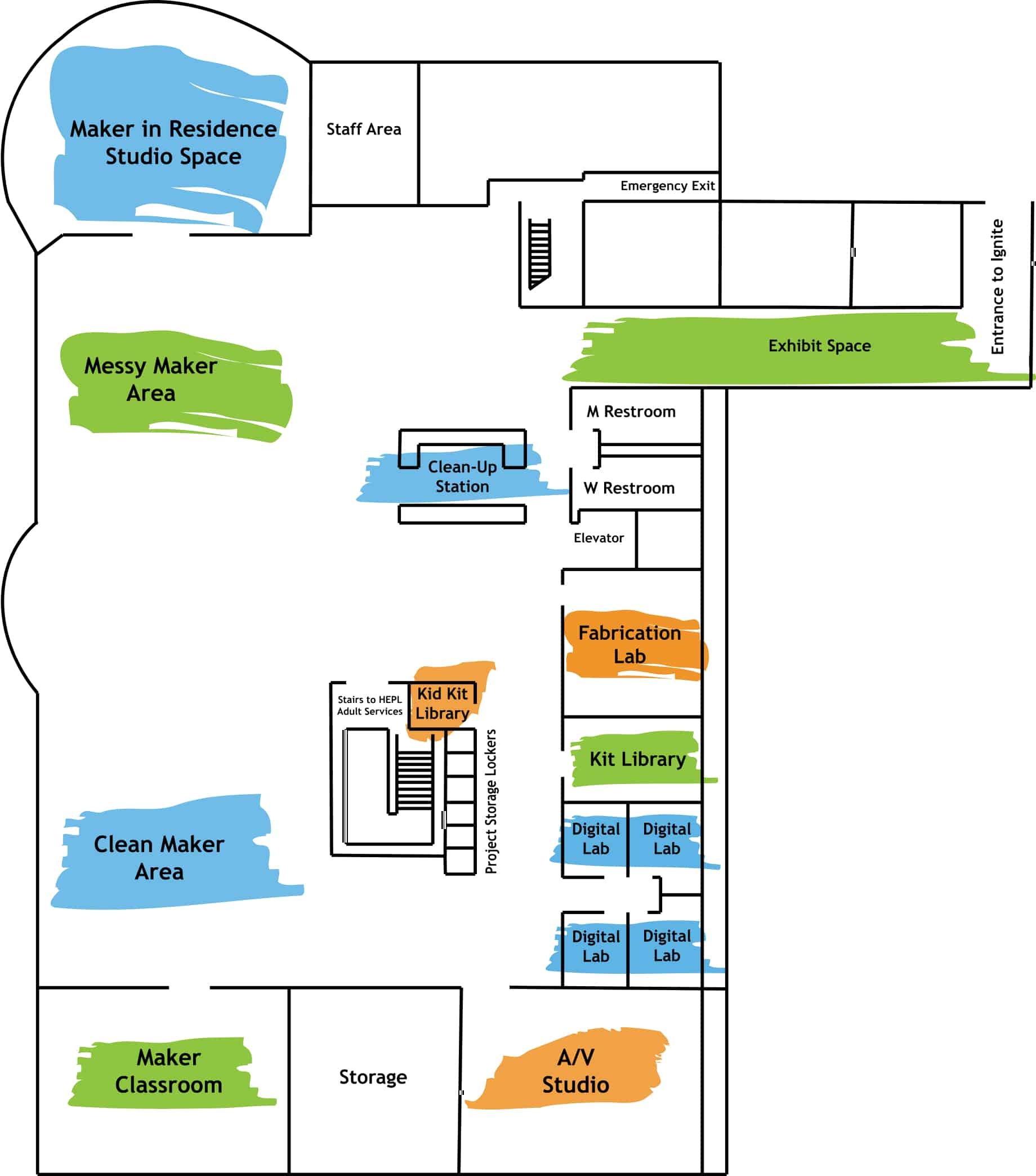By Sydney Brink
 Welcome back to Ignite’s plein air series! In part one, we introduced plein air contour drawing and explored positive and negative shapes in nature. In part two, we will use a monochromatic ink wash to practice with value as a precursor to using color in our paintings. This is another tool for analyzing the potential clutter of a landscape. In case you missed part one: “En plein air” is a French term that simply means painting outdoors.
Welcome back to Ignite’s plein air series! In part one, we introduced plein air contour drawing and explored positive and negative shapes in nature. In part two, we will use a monochromatic ink wash to practice with value as a precursor to using color in our paintings. This is another tool for analyzing the potential clutter of a landscape. In case you missed part one: “En plein air” is a French term that simply means painting outdoors.
Materials
- Watercolor paper
- Watercolor brushes
- India ink*
- A watercolor palette**
- Drawing board and masking tape***
Some notes on materials
*India ink is cheap and easy to find at any box store. It is also very permanent—be careful! This practice can also work well with any monochromatic media, like using only one color of a watercolor set.
** If you don’t have a watercolor palette, you can use a set of small cups. Make sure you have enough wells to create a range!
*** These are necessary if you are using single sheets of watercolor paper—you can also use a watercolor paper block.
Plein Air Monochrome: Getting Started

Value is how light or dark an object is. This is important in all forms of representational art. Giving your piece the right values can help your piece have the illusion of dimensionality to it. In order to better understand value, we’ll paint using India ink to help us break down the value that exists in the landscape we want to recreate.
When you’re out searching for a landscape, look for a scene that has defined areas of light and dark. Sunny days make exceptionally good material for paintings.
Once you’ve found your scene, grab your palette or wells and fill them with water. Add varying degrees of ink to the water so that you have 5–6 shades of gray, ranging from a more-or-less clear water in your well, to a very dark gray/black color.
You can do a starting sketch if you would like, but I recommend not spending more than 10–30 seconds on it. This practice is most effective if you spend more time with the inks themselves rather than getting the specifics of the landscape penciled in.
Starting with the background and working your way to the foreground, block in the shades with your lightest color and work your way to the darkest one. The lightest light you see will be the white of your paper, the next lightest will be the lightest gray, and so forth. Limit yourself to the premixed shades of gray you set out for yourself earlier—this is a study in breaking down the values of the landscape into different “layers” instead of trying to fit in every detail you see.

Plein air monochrome painting is an especially helpful technique for beginners as it helps adjust the eye to seeing light and shadow in the jumbled setting of the great outdoors.
If you have questions, comments, or just want to share what you’ve made, connect with us on Facebook, and be sure to check back in for more blog posts soon.


